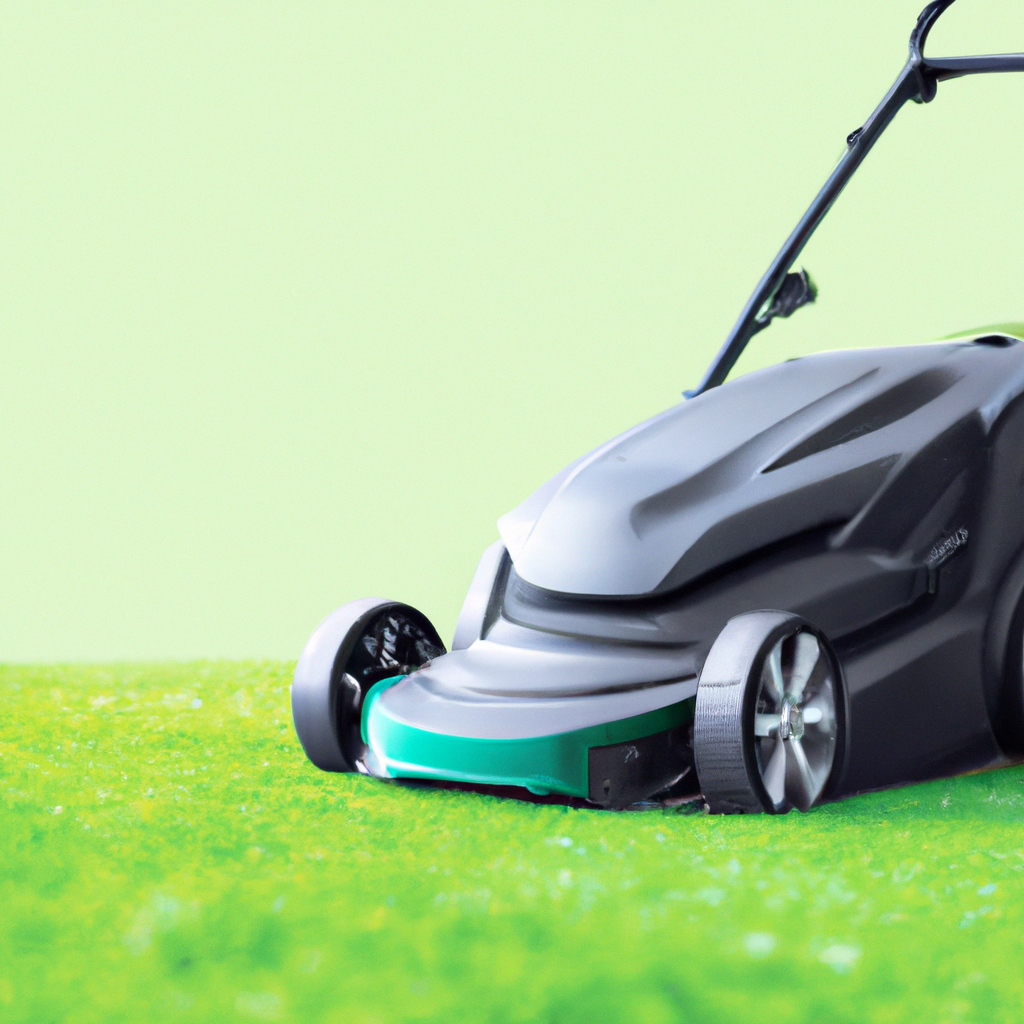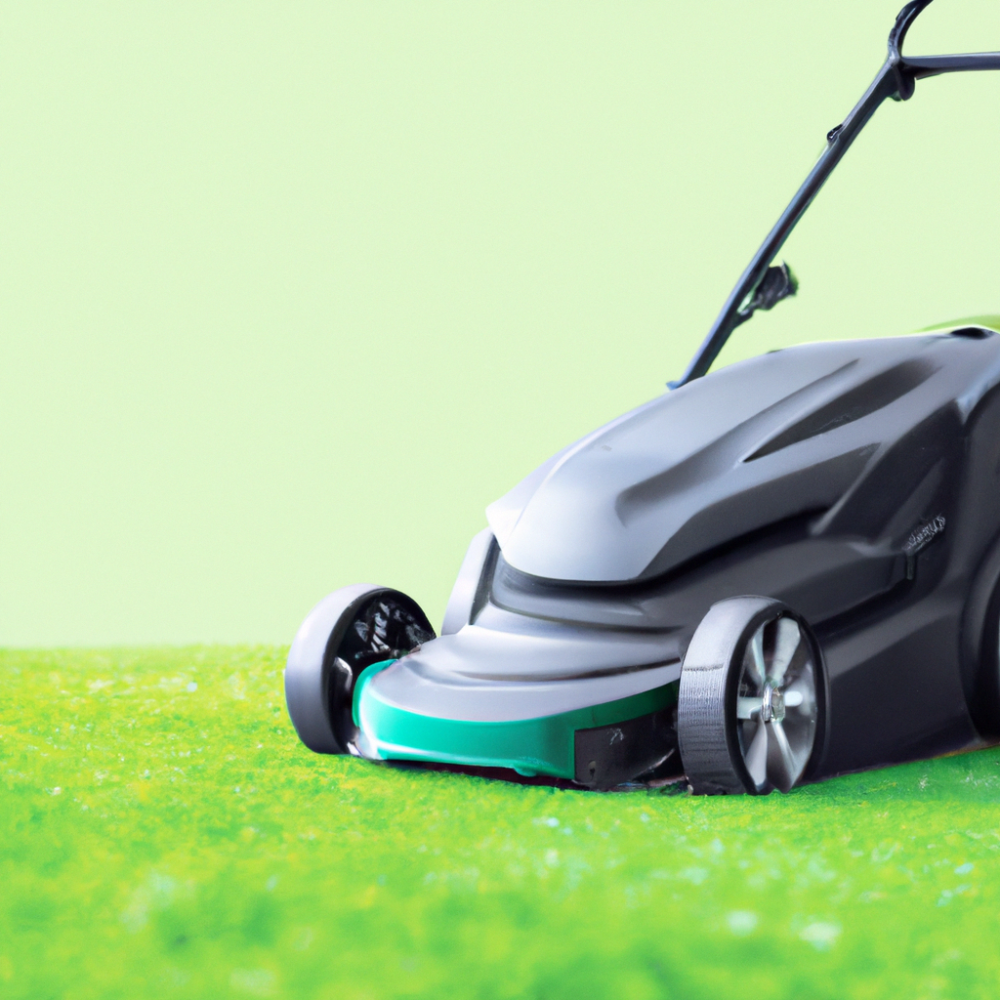So, you’re all set to do some yard work, but there’s just one problem – your electric mower won’t start. Don’t worry, we’ve all been there! Before you start fretting about having to hire a professional or spending big bucks on a new mower, take a deep breath and let’s work through this together. In this article, we’ll explore some simple troubleshooting steps that can help get your electric mower up and running again in no time.

Check the power source
When your electric mower fails to start, the first thing you should do is check the power source. Begin by inspecting the power cord to ensure it is securely connected to the mower. Sometimes, the cord can become loose or detached during storage or transportation. If you find any issues with the power cord, reattach it properly.
Next, make sure the power outlet you are using is functioning correctly. Plug another device into the same outlet to see if it receives power. If the device doesn’t work either, then the problem lies with the power outlet. In this case, you may need to troubleshoot or consult an electrician.
If the power outlet is functioning properly, you should then verify the circuit breaker or fuse box. Look for any flipped circuit breakers or blown fuses related to the electrical circuit that powers your mower. Reset any flipped breakers or replace any blown fuses to restore power to the mower.
Examine the battery
If the power source isn’t the issue, it’s time to examine the battery. Start by checking the battery connection to ensure it is securely attached to the mower. Sometimes, vibrations from mowing can cause the battery terminals to loosen, resulting in a poor connection. If you find any loose connections, tighten them using a wrench or the appropriate tool.
Inspect the battery itself for any signs of damage. Look for cracks, leaks, or corrosion on the battery casing. If you notice any damage, it may indicate that the battery needs to be replaced. Additionally, check the battery voltage with a multimeter to determine if it has enough charge. If the voltage is low, it’s time to charge the battery.
Charge the battery according to the manufacturer’s instructions. Most electric mowers come with a charger specifically designed for their batteries. Connect the charger to a power source and then attach it to the battery. Allow the battery to charge fully before attempting to start the mower again.
Inspect the mower’s components
Now that you have checked the power source and battery, it’s essential to inspect the mower’s components. Start by checking the blade for any obstructions. Grass clippings, twigs, or other debris can get caught in the blade, preventing it from rotating freely. Clear any obstructions from the blade area to ensure smooth operation.
Next, clean the mower’s underside. Over time, grass clippings and dirt can accumulate in this area, impacting the mower’s performance. Use a brush or a damp cloth to remove any debris from the underside of the mower. This will help maintain airflow and prevent clogging.
Inspect the control handle and safety switch to ensure they are in proper working condition. Check for any loose or damaged components that may interfere with the mower’s operation. The control handle should move smoothly, and the safety switch should engage correctly when the handle is released. If you notice any issues, consider replacing or repairing the affected parts.
Ensure proper starting procedure
To ensure a successful start, it’s crucial to follow the manufacturer’s instructions for your specific electric mower model. Different mowers may have slightly different starting procedures, and it’s important to understand and execute them correctly. Familiarize yourself with the steps outlined in the owner’s manual to avoid any unnecessary complications.
As you prepare to start the mower, verify that you have taken the necessary safety precautions. Wear appropriate protective gear, such as gloves and safety goggles, to shield yourself from potential hazards. Clear the mowing area of any obstacles or objects that could pose a risk during operation. Taking these precautions will help ensure both your safety and the proper functioning of the mower.
Check the start button or lever on the mower and ensure it is in the correct position. Some mowers require the lever to be engaged, while others have a separate start button. Make sure you understand the required action and confirm that the start button or lever is in the appropriate position before attempting to start the mower.

Troubleshoot the safety features
Electric mowers often come equipped with various safety features to protect the user and prevent accidents. If your mower won’t start, it is essential to check if these safety features are operating correctly.
Begin by checking if the safety key is correctly inserted. The safety key is a small device that ensures the mower cannot start unless it is inserted into the designated slot. If the key is missing or not inserted properly, the mower will not start. Locate the safety key and insert it fully to engage the safety mechanism.
Verify if the dead-man switch is engaged. This switch is usually located on the handle of the mower and requires constant pressure to keep the mower running. If you release the handle or let go of the dead-man switch, the mower should automatically stop. Check if the switch is engaged correctly and adjust it if necessary.
Inspect the seat presence switch if your electric mower has one. Some models are equipped with a seat presence switch that prevents the mower from starting if there is no operator in the seat. Make sure the switch is functioning correctly and allowing the mower to start when occupied and preventing it from starting when unoccupied.
Clean or replace the air filter
A clogged air filter can restrict airflow to the mower’s engine, causing it to struggle or fail to start altogether. To address this issue, locate and remove the air filter from your electric mower. The location of the air filter can vary depending on the model, so refer to the owner’s manual for guidance.
Once you have the air filter in hand, inspect it for dirt, debris, or damage. If the filter is dirty, you can clean it by gently tapping it or using compressed air to remove any trapped particles. Be careful not to damage the filter during the cleaning process. If the filter is damaged or excessively dirty, it is best to replace it with a new one.
To replace the air filter, ensure you have the correct replacement filter that fits your mower model. Insert the new filter into the designated slot, making sure it is securely in place. A clean or a new air filter will promote proper airflow and combustion, improving the chances of your electric mower starting successfully.
Inspect the spark plug
The spark plug plays a vital role in igniting the fuel-air mixture within the mower’s engine. Over time, the spark plug can become dirty or worn out, hindering the ignition process. To inspect the spark plug, locate it within the engine compartment of your electric mower.
Carefully remove the spark plug from the engine, making sure not to damage the ignition wires or surrounding components. Examine the spark plug for any signs of dirt, corrosion, or wear. If the spark plug appears dirty, you can clean it using a soft brush and a specialized spark plug cleaner. However, if the spark plug is damaged or worn out, it is best to replace it with a new one.
When replacing the spark plug, ensure you have the correct type and size recommended by the manufacturer. Install the new spark plug into the engine, hand-tightening it initially, and then using a spark plug wrench to secure it snugly. A clean or new spark plug will provide a reliable spark for ignition, improving the chances of your mower starting smoothly.
Check the wiring and connections
Inspecting the wiring and connections of your electric mower is crucial to ensure proper electrical flow. Over time, wires can become damaged or loose, potentially impacting the mower’s performance or causing it not to start at all.
Carefully examine the wiring for any visible signs of damage, such as fraying or exposed wires. If you notice any issues, it is best to consult a professional for repairs or replacement. Additionally, check for any loose connections throughout the mower’s electrical system. Tighten any loose wires or components, ensuring a secure and reliable connection.
If you are unsure about the condition of the wiring or connections, it is advisable to seek professional assistance. Electric mowers involve complex electrical systems, and attempting repairs without the necessary expertise can be dangerous. A professional can accurately diagnose any electrical issues and perform the required repairs or replacements.
Evaluate the motor
If none of the previous steps have resolved the issue, it’s time to evaluate the motor itself. A malfunctioning motor can prevent an electric mower from starting or cause it to stall during operation. Pay attention to any unusual sounds coming from the motor, such as grinding or rattling noises, as they may indicate a problem.
Check if the motor is overheating by feeling the exterior casing. If it feels excessively hot, it is a sign that the motor is working harder than it should or that there is a malfunction. Overheating can lead to internal damage and may require professional repair services. If you suspect a motor issue, it is best to contact a professional with expertise in electric mower repair.
Attempting to repair or diagnose motor-related problems without the necessary knowledge and experience can be risky. Electric motors are intricate systems, and they require specialized skills to handle appropriately. A professional technician can assess the motor, diagnose any issues accurately, and provide the necessary repairs, ensuring your electric mower is back in working condition.
Consult the manufacturer or a professional
If all else fails and you are still experiencing difficulty starting your electric mower, it’s time to consult the manufacturer or seek professional assistance. The manufacturer’s input can often be invaluable, as they have in-depth knowledge of their products and can guide you through troubleshooting steps specific to your model.
Review the owner’s manual provided by the manufacturer. Look for troubleshooting guides or contact information for customer support services. Many manufacturers offer dedicated customer support lines or online portals where you can seek guidance or request assistance. Explain the issue you are facing and provide any relevant details to help them understand the problem better.
If the issue persists or the manufacturer recommends it, consider contacting a professional repair service. Electric mower repair can be challenging, and professionals with experience in handling electric lawn equipment will be better equipped to diagnose and resolve complex problems. They have the expertise and necessary tools to identify and fix any underlying issues, ensuring your electric mower starts and operates smoothly.
Remember, it’s essential to address any problems with your electric mower promptly and adequately. Regular maintenance and timely troubleshooting can prevent significant issues from arising and extend the lifespan of your mower. Taking the time to understand your mower’s components and following the recommended maintenance practices will ensure you have a well-functioning and reliable tool for your lawn care needs.





